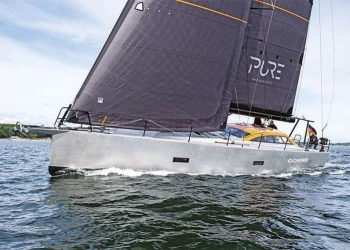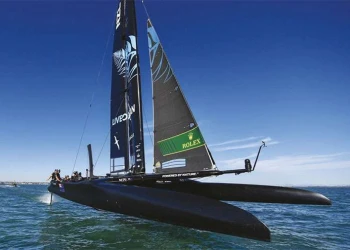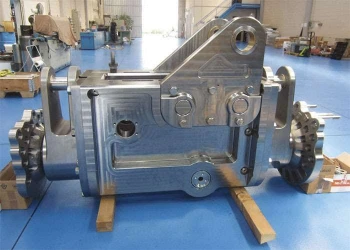
RM1080
The RM1080 is the La Rochelle based yard’s latest little rocket
RM Yachts’ new 1080 is a more powerful and spacious version of one of the marque’s most successful boats… and it will be even faster downwind
Over the past 35 years RM Yachts has taken a unique, yet successful, path developing increasingly innovative and refined performance cruising yachts that harness the benefits of building in epoxy and plywood. The RM1080 is the La Rochellebased yard’s latest little rocket and is in many ways a direct development of racing Class40s, both inside and out.
It’s a Marc Lombard design that also retains key attributes of existing RM models, including exceptional attention to detail and standard of finish, plus bright interiors with excellent natural light thanks to the trademark big forward coachroof window. There’s also an option of very efficient twin bulb keels that combine moderate draught with the ability to dry out at low water, yet without compromising sailing qualities.
What are the big differences between this new model and the eight-year-old RM1070 it replaces? While that model was very well regarded, ‘the yacht design world has moved a lot in that time,’ says RM’s César Dohy. ‘The boats are getting more powerful and they are now much wider forward.’
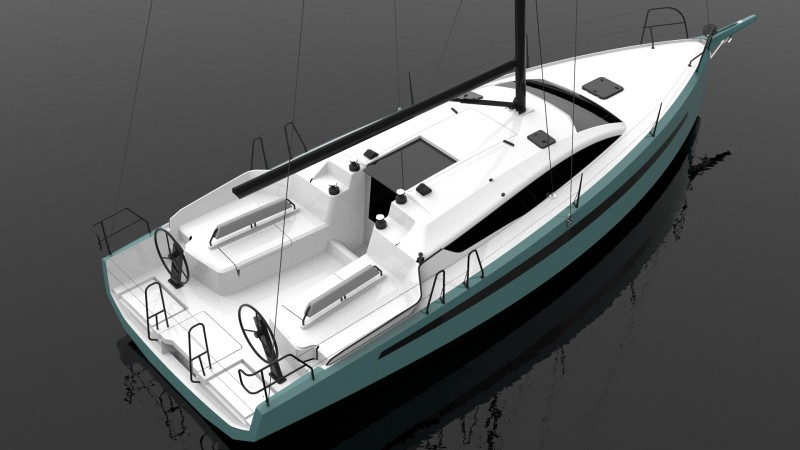
The waterline beam of the new boat is much greater, especially in the forward sections, even if displacement and maximum beam at deck level remain the same. As with many new out-and-out performance designs, the mast is also positioned further aft, with a lot more rake – five to six degrees.
As a result of these changes, ‘this boat will have the same upwind ability as the previous model,’ according to Dohy, ‘but much better reaching and downwind stability, with easy control and higher average speeds.’
That's where some of the changes to the cockpit layout become important. Given the overall length of only 36ft, when sailing fast in heavy seas there's potential for a lot of water on deck. ‘That's why we implemented the high Class40 style coaming,’ he adds. This runs across the side deck at the front of the cockpit, then aft along the gunwale. O There's also a big fabric sprayhood over the companionway. ‘She should be very dry when reaching in big seas and above 20kts,’ says Dohy.

A secondary benefit of the new coamings is that the entire width of the boat can be used for the cockpit when in port or at anchor. The backrests for the benches each side can be removed, creating enough space on each side of the boat for double sun beds. It’s another first for a performance yacht of this size. All four winches are at the companionway, where almost all sail handling operations can be carried out easily by one person. ‘It’s a big point,’ Dohy emphasises. ‘You can do everything there, apart from the mainsail traveller, which is controlled from the helm.’
This is a great setup for cruising because manoeuvres, including reefing, can be carried out really easily and safely. Even if you're on watch on your own everything happens in one place, under the shelter of the large fabric sprayhood. This has three frames – one more than is typical – to make it almost as stiff as a solid structure. It’s also fitted with strong stainless steel handrails along the aft edge and on each side, for use when going forward.
A choice of carbon and aluminium spars is offered and owners can specify the sail wardrobe that suits them best. However, most are expected to opt for a standard five-sail configuration of mainsail, genoa, staysail, asymmetric kite and code zero. This gives a flexible all-round inventory that will cover all situations, without unnecessary cost, while minimising the number of sails that need to be stowed below decks.
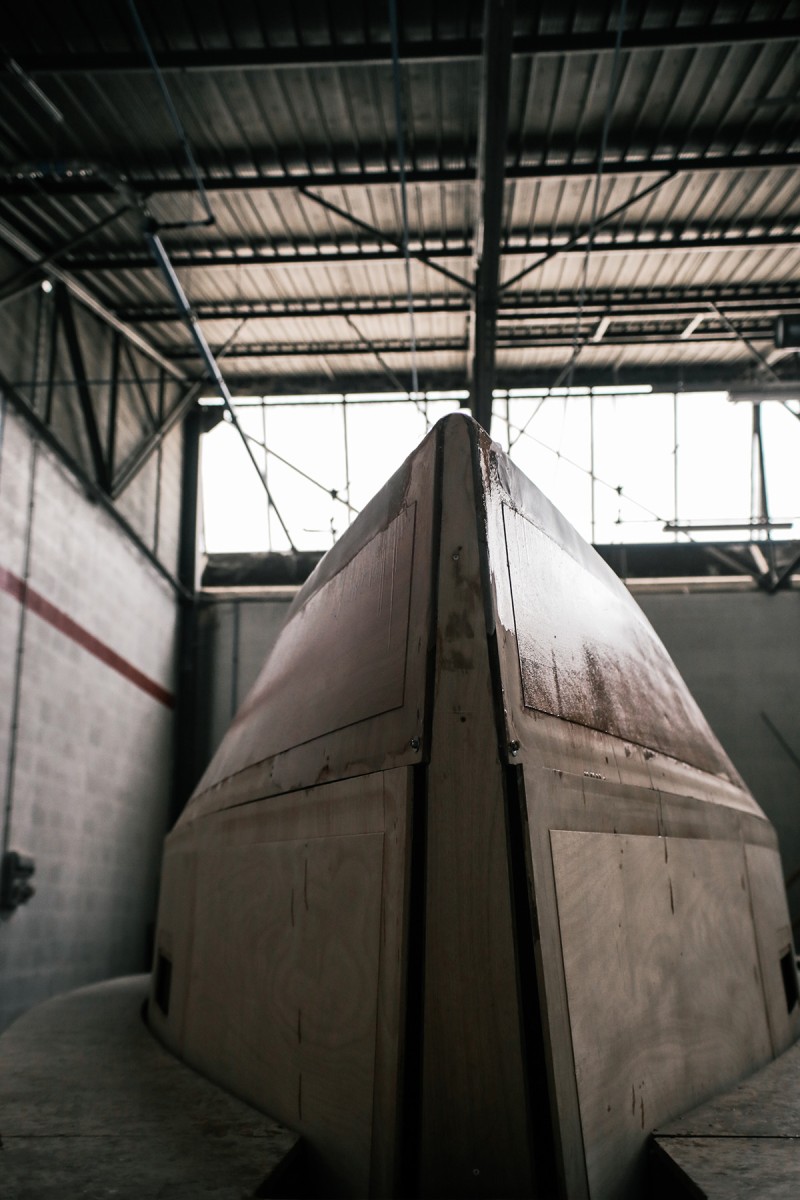
The mainsail is exactly the same size as the genoa, while RM worked hard to make the staysail work as flexibly as possible, both with the gennaker and code zero. Sceptics might wonder whether such a sail is likely to get much use when cruising, especially as it's unlikely to add more than 0.4kts of boat speed. However, its presence, forward of the centre of effort, makes the boat more stable and easier to steer, especially when using the autopilot. That in turn makes for an easier motion and more comfortable ride, while simultaneously increasing average speeds.
For this reason, Dohy says, ‘we find staysails are used a lot on all our boats.’ It's also designed for use upwind when the true wind rises above about 16-17kts. This makes for a much more efficient sail plan than a part furled genoa. And it can be set up in winds well under 20kts, eliminating foredeck acrobatics in rougher conditions and a rising wind.
Why didn’t RM go for a full scow bow shape? ‘It just doesn’t make sense for this type of boat, says Dohy. ‘That’s partly because it's would be too uncomfortable going upwind for a cruising boat.’ However, there's a more fundamental reason as well. ‘We've tried hard to keep the displacement down, but if the hull shape is too wide it's impossible to avoid extra weight.’
How much of an attempt was made to minimise wetted surface area to boost performance light airs and thus minimise use of the engine when cruising? ‘It's a good question,’ says Dohy. ‘She's very beamy on the waterline, but as soon as there is a few degrees of heel the immersed area reduces dramatically.’
At the same time, despite the broad bow sections, the RM 1080’s waterline length is relatively short by today’s standards at only 10.4 metres. This reduces frictional resistance in light airs. Yet, at the same time, the underwater profile has a flat run aft, akin to that of many motor boats. This is a crucial factor in promoting early planing.
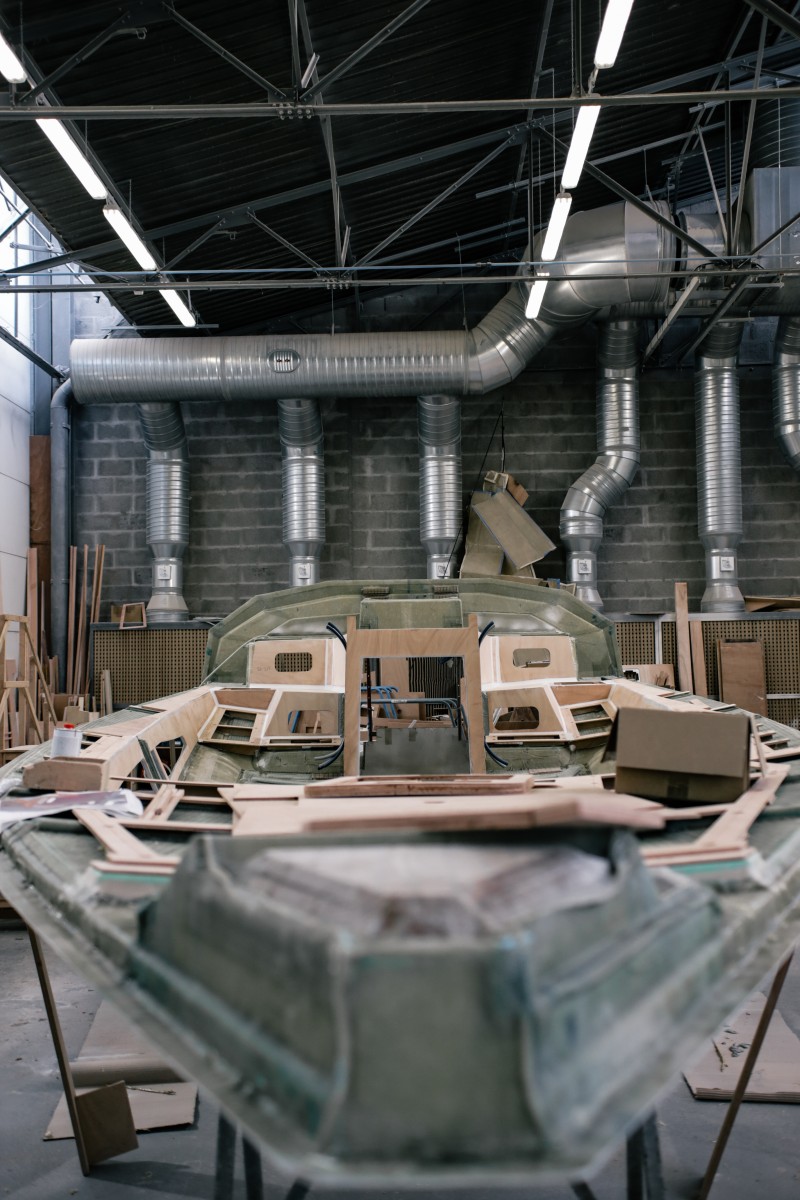
Below decks the roomy two-cabin accommodation has the same general feel as existing models, with a lot of glazing and plenty of white paint. There’s lots of room, even though the entire design is quite simple to keep the weight down, and there’s less heavy joinery on show than typical heavier cruising yachts.
The biggest difference in the saloon compared with the 1070 is that the table is offset to one side and the new boat feels a little more spacious, simply as a result of the more powerful hull shape and additional waterline beam.
This is particularly noticeable in the owner's cabin forward, where there's roughly an extra 30cm of room. It’s enough to make a big difference to the feeling of space and to improve stowage, making this a much more appealing area than that of the older boat. It’s a factor that should be a key selling point, after the boat’s top-notch performance and its innovative cockpit layout.
As with all RM designs, there’s a very large and well-appointed galley, plus a dedicated technical area aft on the starboard side. This is accessed from the heads compartment and has all the core systems and electrics laid out in an accessible manner. There’s plenty of space in this zone, which is a huge benefit for routine maintenance, for troubleshooting problems and for retrofitting extra equipment at a later date. The technical area is also fitted with a foul weather gear locker with a drain.
When RM was founded in the late 1980s it ploughed a somewhat lonely furrow in producing plywood yachts with an outer layer of epoxy and glass to provide excellent impact resistance. However today, an increasing number of boatbuilders and owners understand the advantages of this type of construction. It’s lighter than monolithic fibreglass construction, and equal to foam sandwich, but with the added advantage that the shape of the boat, with multiple chines, massively increases stiffness.
This construction method also benefits from a beautifully efficient production process. At RM all parts are cut by a CNC machine well in advance of each build so that they can settle to the temperature and the humidity of the carefully controlled factory environment. The plywood panels are connected fore and aft off the boat, using scarfs and big jigsaw style joints to create a single giant full-length plank, which makes for a very smooth, seamless finish.
These are then offered up to a permanently set up jig that automatically creates the hull shape, without the need for a wasteful full mould. After fitting of internal systems, and the galvanised frames that distribute keel loads, the hull is then married to a conventional foam sandwich deck. It’s a well-proven and more environmentally friendly system that creates powerful, distinctive state-of-theart yachts with excellent longevity.





